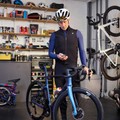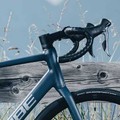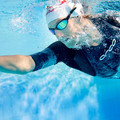
Hydration For Cycling
How Much & What to Drink
We spoke to Lexi Kelson at Precision Fuel and Hydration for her fluid intake tips to support your cycling performance and to assist you in maintaining optimal hydration levels when out on a ride. Whether you are riding in hot conditions, cooler conditions or even going for a long ride in humid conditions a hydration plan is essential to avoid dehydration.
Staying Hydrated During Exercise
During endurance exercise, your total sweat losses are bound to mount up and require a strategic approach to fluid consumption in order to adequately replace a decent proportion of those losses.
The amount of fluid you need to consume during exercise is tied to the amount you’re losing (via sweating). But just drinking more plain water isn’t always the answer, and in fact, it can lead to problems if you’re chugging too much water without accounting for the electrolytes you need.
Hydration equation
Think of your hydration strategy like an equation: sweat sodium concentration x sweat rate x duration = total losses.
Sweat sodium concentration is how salty your sweat is. Sweat rate is how much total sweat (aka fluid) you’re losing. And duration is just how long you’ll be exercising for!
You can start filling in the holes of this equation by measuring your sweat rate (check out this guide + downloadable spreadsheet). Everyone sweats at a different rate based on many variables such as body weight, so working out your personal sweat rate will play a crucial role in getting a clearer picture of the nutrition required.
Optimal Hydration For Varied Weather
It’s best to do this in different weather conditions so you can tailor your fluid intake to the weather you’ll be racing in. When it’s really hot out, you’ll likely need to drink more total fluid than when it’s cold out because your sweat rate will vary depending on weather conditions.
But, the contents of the bottle will likely be the same, as this is based on your individual sweat sodium concentration. Same solution, just drinking more of it in hot weather.
Conduct a Sweat Test
If you’re not near a Sweat Test Center, you can check out these signs of being a salty sweater to help estimate how much sodium you might need in your drinks. Or fill out the Fuel & Hydration Planner for a specific race you have on the calendar to get sodium, fluid and carb targets.
There are also sweat test products such as the Flowbio which can assist you in understanding fluid loss and how to hydrate if you are a heavy sweater. There are also devices that can help you understand your core temperature like the Core thermal sensor, a handy device for those wanting to know about their body temperature when training.


Hydration Drinks - What is Your Primary Drink?
To determine what you need to drink, start by figuring out your sodium needs (Sweat Test or estimation) and select your primary electrolyte drink based on this. Using the PF&H electrolyte range, you would select either PH 500, 1000 or 1500, mixing 1 tablet or sachet in 500ml of fluid to achieve the correct relative sodium concentration corresponding to the tablet strength.
If using a litre water bottle, add 2 x tablets/sachets. Alternatively, prepare larger batches of each strength in a gallon jug (mixing 8 x tablets for 4 L) and decant into various bottle sizes across what you carry on your bike.


How much fluid to drink
To determine how much of this solution to drink, measure your sweat rate in the intensity and conditions you’re creating a plan for. At a minimum, aim to drink 1 serving (500ml) of your recommended strength either before, during or after any training session or when sweating. When it’s particularly hot or humid, training load is significant and/or overall sweat output is high, consuming more servings is appropriate.
Over or under drinking
You should combine this data with your thirst signals and urine output for a stratified approach. If you find yourself urinating frequently, typically more than 7-8 times per day, and it’s very clear in colour, you may be drinking too much total fluid or plain water. Urinating infrequently (much less than 4 times per day routinely) and passing dark yellow or orange urine is a sign of inadequate fluid intake. Address this by taking frequent sips of your primary hydration drink until any thirst signals subside and urine turns a paler colour.
Cycling Hydration FAQs
What are the signs of being dehydrated?
Cyclists experiencing dehydration may notice increased thirst, dry mouth, and a higher than usual heart rate for their effort. Other signs include fatigue, dizziness, headaches, dark urine, and reduced sweating. Dehydration can also contribute to muscle cramps. When you're dehydrated, your body's fluid balance is off, which can affect how your muscles contract and relax. This, along with potential electrolyte imbalances (like sodium and potassium) that can occur with fluid loss, can make muscles more prone to cramping.
What products do you stock to support hydration?
There are tonnes of sports drinks out there to support your hydration, as well as specific hydration mix products, hydration tablets and much more, as well as products to help you onboard carbohydrates.
Can you drink too much water when cycling?
Yes, you can drink too much water when cycling. This occurs when you consume excessive amounts of plain water without adequately replacing electrolytes, and particularly your sodium intake, which can lead to a dangerously low sodium concentration in your blood. This can result in symptoms like nausea, headaches, confusion, and in severe cases, swelling of the brain and seizures.





